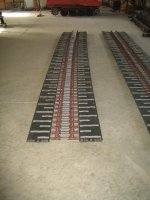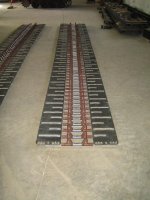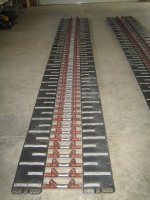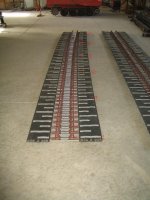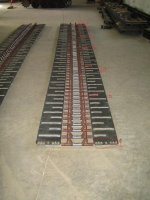Here's my thought. Assuming that there are equal amount of cleats on each track, one track revolution involves the same sprocket tooth / rev as the other side. Assuming no slippage from the track to the ground, you will travel 3" shorter / revolution of track because that track length is shorter.
I like problems that make me think. If we are assuming that both tracks have the same number of grousers but are different lengths I still think it would track straight. In order for the tracks to have the same number of grousers the spacing would have to be slightly off but still close enough to engage the sproket correctly on both sides. If that is true then both sprockets are still spinning at the same speed...
For conversation sake I think adding another wheel to one side and adding enough track to cover it wouldn't make any real speed difference in one side verses the other.
Who knows,, I'm going to think some more...
To eliminate the tracks as the problem you could always mark the sprockets, get two helpers to watch and count rotations while you "drive". See how far out it is after 10, 20, 50? That would be my next step..
Anyone Else?
Gary
(I feel like this is a bit like the airplane on a treadmill....)

